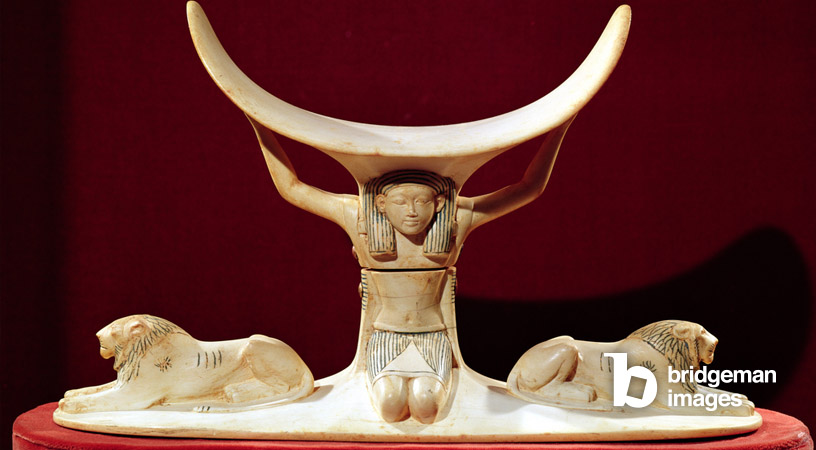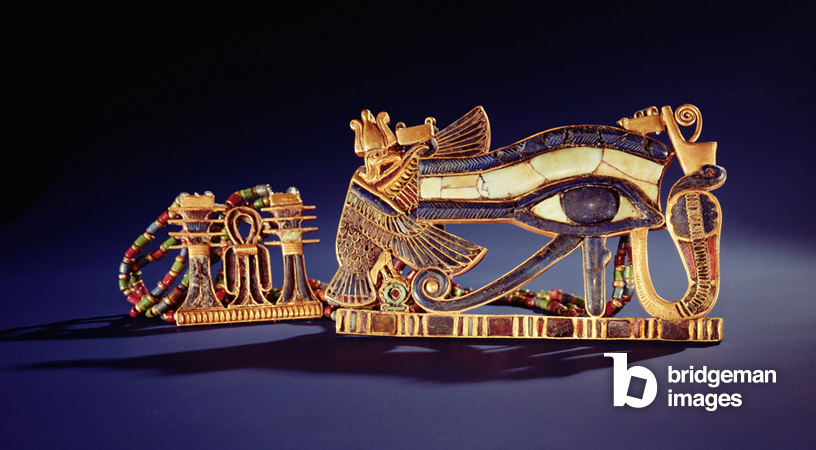Published 03/08/2023
Ancient Egypt, the cradle of a millennial civilization, has left behind a fascinating artistic heritage that continues to captivate the modern world. From majestic pyramids to mysterious hieroglyphs, Egyptian art reflects the ingenuity, spirituality, and unique vision of this ancient society.
View our selection of works from Ancient Egypt.
Many artists from later periods are known, but those from Egypt are completely anonymous, and for interesting reason: their art was functional and created for practical purposes, while art that came later in the timeline was intended for aesthetic pleasure.
The Perfect Balance of Ma'at
Egyptian symmetry reflects the cultural value of Ma'at (harmony), which was at the heart of their civilization. Ma'at represented not only the universal and social order but also the very fabric of creation, born when the gods brought forth a structured universe from undifferentiated chaos. The concept of unity, oneness, and that of "chaos," is that the gods introduced duality - night and day, female and male, darkness and light - and this duality was governed by Ma'at. This is why Egyptian temples, palaces, homes, gardens, statues, paintings, rings, and amulets were all created with a concern for balance and symmetry, reflecting the value of this concept.

The Art of the Elite: A Window into Egyptian Society
Egyptian art is the history of the elite, the ruling class. During most historical periods in Egypt, those with more modest means could not afford the luxury of artworks to tell their stories, and it is largely thanks to Egyptian art that the history of the civilization became known. Tombs, funerary paintings, inscriptions, temples, and even the majority of literature are dedicated to the lives of the upper class, and it is through these stories that the tales of the lower classes are revealed. This paradigm was already established before the written history of the culture.
Evolution of Egyptian Art
Egyptian art developed over the centuries, transitioning from rock drawings and ceramics of the pre-dynastic period to the impressive architectural achievements of the Old Kingdom. During the Old Kingdom, art was standardiszed to reflect the tastes of the capital city, Memphis. The First Intermediate Period allowed for more artistic freedom and the emergence of mass production.

The Zenith of Egyptian Art: The Middle Kingdom
Art flourished during the Middle Kingdom, widely regarded as the pinnacle of Egyptian culture. Colossal statues and the grand temple of Karnak in Thebes exemplify this period. Idealized representations of the Old Kingdom give way to more realistic depictions, with a more frequent inclusion of lower classes.

The New Kingdom: Embracing Refinement
The New Kingdom is the most famous period in Egyptian history, producing some of the most beautiful and renowned works of art. The bust of Nefertiti and the gold funerary mask of Tutankhamun hail from this era. Interaction with other cultures enriched Egyptian art.

Discover our selection of Tutankhamun images.
Preserving Expertise, A Quest for Eternity
After the New Kingdom, the Third Intermediate Period and the Late Period of Ancient Egypt attempted to maintain the high level of art from the New Kingdom while evoking the styles of the Old Kingdom in an effort to regain Egypt's declining stature. The Ptolemaic dynasty and Roman Egypt continued to draw inspiration from ancient models.

Symbolic Details of Egyptian Art
Forms of Egyptian art were diverse, ranging from mirrors and furniture to jewelry, statues, and funerary objects. Each detail was meticulously chosen to convey symbolic meaning. Wall painting techniques, stone, wood, and metal sculptures, as well as cloisonné for jewelry, showcase the richness of Egyptian craftsmanship.
Egyptian art, though anonymous, has left an incredible artistic and cultural legacy that continues to captivate the modern world. The functional and symbolic creations of ancient Egypt have transcended the centuries, inspiring future generations and fueling humanity's admiration and wonder for this extraordinary civilization.

View our selection of works from Ancient Egypt.
Get in touch with our team; we are always delighted to assist you in your searches, with no obligation or additional cost.


